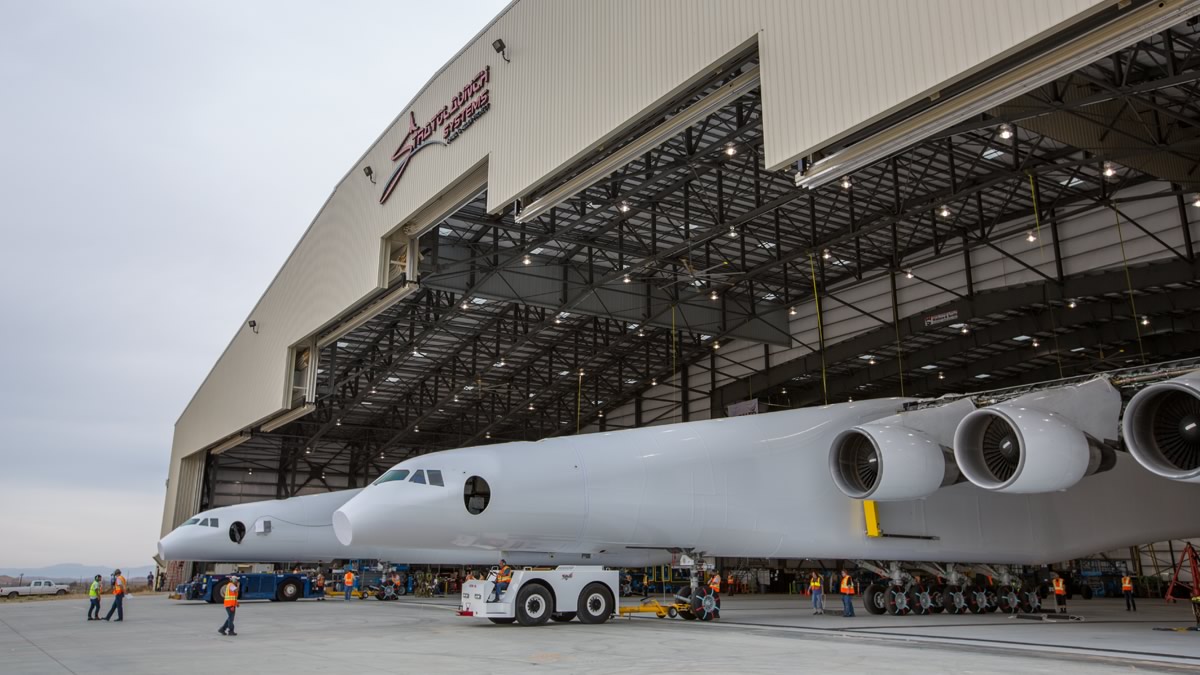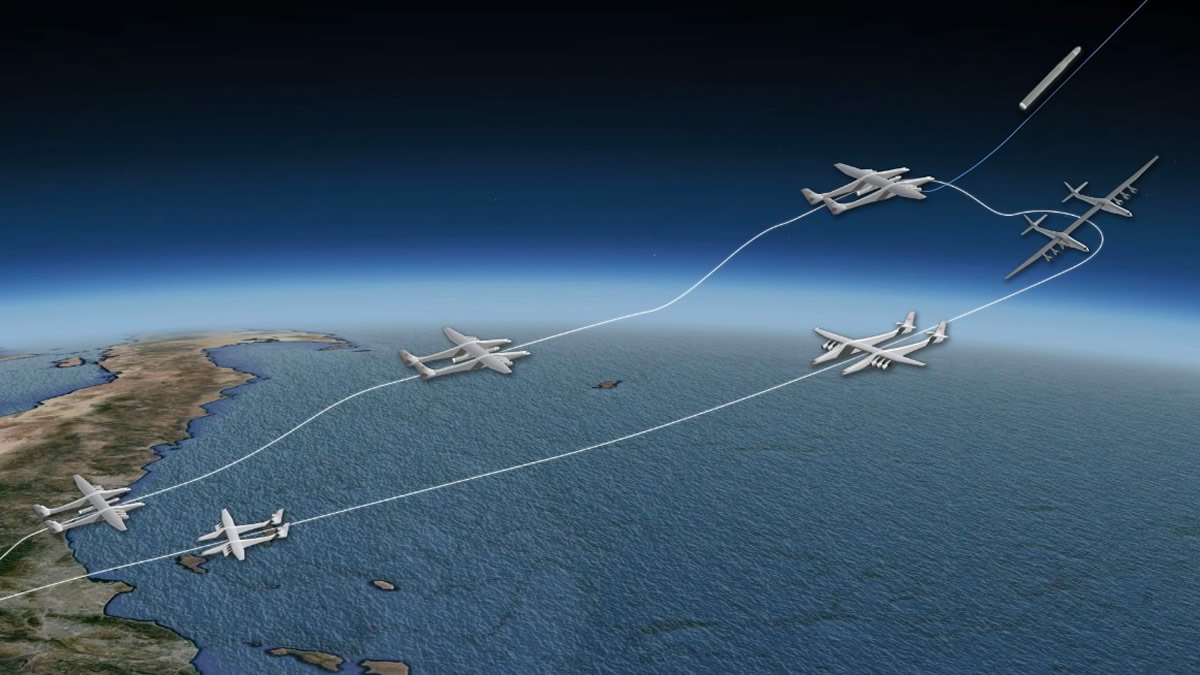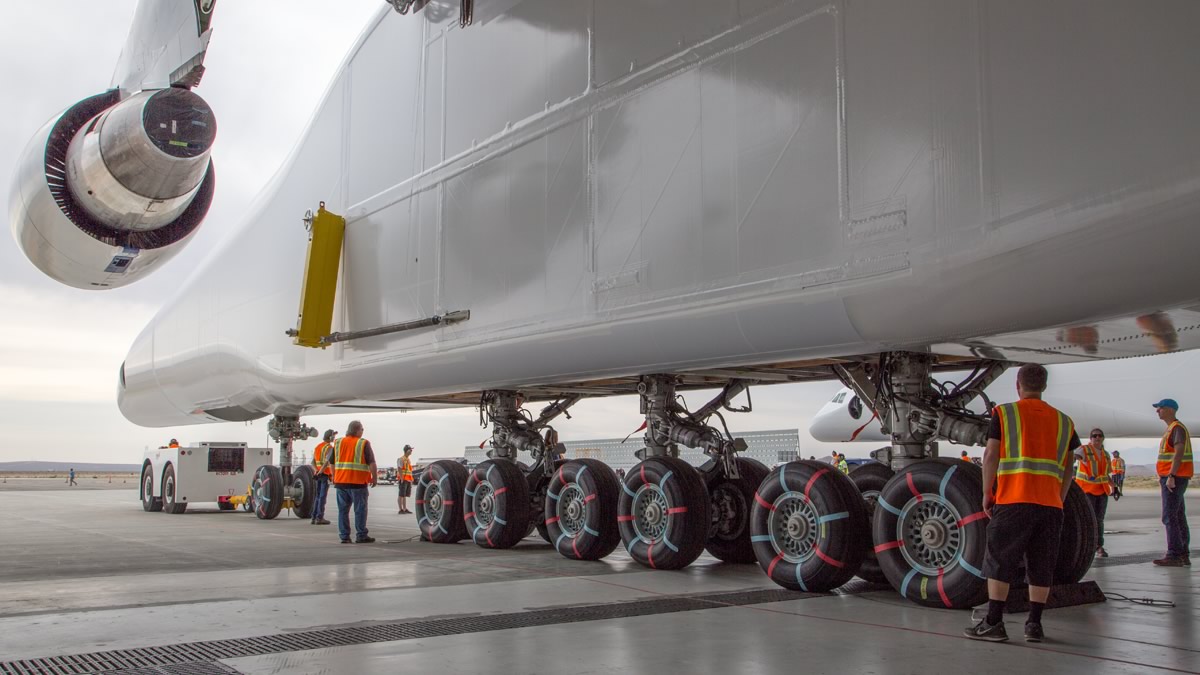Paul Allen first showed Stratolaunch carrier aircraft to speed up the first stages of rockets.

Microsoft co-founder Paul Allen wisely spends money earned on the sale of computer programs - he builds airplanes on them and plans to launch rockets into space. Founded in 2011, Vulcan Aerospace rarely holds public events, but this time there was a reason. On May 31, 2017, a ceremonial presentation of a giant Stratolaunch aircraft to launch rockets into space took place - on this day a large machine with a wingspan of more than the size of the ISS was first rolled out of the hangar for testing the fueling system. This day marks the end of the initial phase of aircraft construction - and the beginning of ground and flight tests.
Reusable carrier aircraft to accelerate the first stages of rockets - this is another way to reduce the cost of space launches for launching small satellites into orbit. With such aircraft, the launch of cargo into orbit will literally become commonplace: flights can be made several times a day.
In the past few weeks, three-story scaffolding and other building equipment were removed from the aircraft - and for the first time they loaded the landing gear with 28 wheels with a full weight. This was a key stage before the rest of the tests. When the rack sustained the load, the opportunity for the first time to weigh the aircraft. Its weight was about 226.8 tons.

Based on the dimensions of the aircraft is not such a large mass. The wing span of the Stratolaunch is 117 m (world record), the ship's length is 72 m, and its height is 15 m.

Stratolaunch is designed for a maximum take-off weight of 590 tons. This means that it will be able to lift approximately 250 tons of payload.

As already reported in the autumn of 2016 , during the first flight mission, the Stratolaunch will lift into the stratosphere one cruise carrier rocket Pegasus XL manufactured by Orbital ATK. Potentially, the aircraft can lift three such launch vehicles. These missiles have repeatedly demonstrated their reliability in launching satellites into orbit.
Previously, the B-52 and L-1011 corporations of Orbital were used as a carrier aircraft for the Pegasus. The plane reaches a height of 12,000 meters and gives the rocket a subsonic speed (about 3% of the space velocity), after which the rocket is separated and takes the satellite into orbit.
Stratolaunch will cope with the task more effectively, because it will be able to lift three launch vehicles at once (from a height of 9100 m). Unlike the B-52 and L-1011, it was originally designed specifically for this task.

Over the coming weeks and months, Vulcan Aerospace plans to actively conduct ground and flight tests based at the Mojave Aerospace Center, which is located in Mojave, California, coordinates 35 ° 03'34 "N 118 ° 09'06" W, at an altitude of 851 m.

Satellite image of the Mojave Aerospace Center shows civilian airliners that are being renovated and upgraded
Vulcan Aerospace emphasizes that the Stratolaunch is the first of its kind aircraft, so they will be thoroughly tested, putting the safety of pilots, crew and personnel first. The first flight tests can take place as early as 2019.


Vulcan Aerospace celebrates May 31, 2017 as a historical stage of its mission and thanks its partners from Scaled Composites, which helped in the construction of the aircraft. Scaled Composites is another company funded by Paul Allen. At one time, she won the Ansari X prize and received $ 20 million to build the first private spacecraft. Actually, the Stratolaunch itself with cruise launch vehicles along the flight profile is similar to SpaceShipOne, a private suborbital reusable manned spacecraft that had previously built Scaled Composites. He also initially rises to an altitude of about 14 km with the help of a special WhiteKnight carrier aircraft.
In the field of private suborbital flights, space tourism and aircraft for rockets, private business has recently revived. Another private company, Virgin Galactic, also creates its own launch system based on the development of Scaled Composites. Its private suborbital manned reusable spacecraft SpaceShipTwo was supposed to be launched from the WhiteKnightTwo aircraft carrier, and now the company is working on a new project.

The wreckage of SpaceShipTwo in the Mojave Desert. November 1, 2014
Stratolaunch and similar aircraft carriers with cruise missiles are guided by the growing demand for the launch of small satellites.
Vulcan Aerospace does not disclose the amount of investment in the project. But it is known that this amount is at least hundreds of millions of dollars. However, Vulcan Aerospace executives explain that Paul Allen’s investments are not made for financial profit. At least this is not the primary motivation of Allen.
Tests Stratolaunch May 31, 2017
All Articles